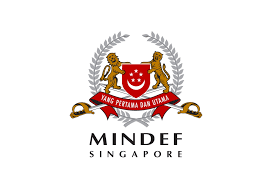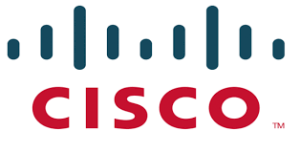WSQ Grant of up to 50-70%
The key objective of this certification training is to help learners to understand and assess security risks, threats and vulnerabilities, and recommend security initiatives to mitigate them
You will be ready to take the Microsoft CyberSecurity Risks Certification Training after the successful completion of this training.
The Microsoft Cybersecurity Architect course is meticulously designed to empower learners with a robust understanding of the complexities and nuances of cybersecurity within the Microsoft ecosystem.
Participants will delve deep into the architectural principles and best practices to design secure solutions on Microsoft platforms.
The course also delves into the nuances of cloud security, network security, and endpoint protection within Azure and Microsoft 365, covering topics ranging from identity and access management to advanced threat protection.
By the end of the program, learners will be equipped with the knowledge to design and implement comprehensive security strategies, ensuring that data, assets, and resources are safeguarded across Microsoft’s suite of services and products.
Through theoretical knowledge and practical exercises, participants will also be primed to respond effectively to emerging threats and vulnerabilities in real-world scenarios.
The hands-on approach adopted in this course is designed to produce competent professionals capable of meeting today’s cybersecurity challenges.
Course Outline for Microsoft Cybersecurity Architect Certification Training in Singapore
SECTION 1: Design solutions that align with security best practices and priorities
- Topic 1 Introduction to Zero Trust and best practice frameworks
o Introduction to best practices
o Introduction to Zero Trust
o Zero Trust initiatives
o Zero Trust technology pillars part 1
o Zero Trust technology pillars part 2 - Topic 2 Design solutions that align with the Cloud Adoption Framework (CAF) and Well-Architected Framework (WAF)
o Define a security strategy
o Introduction to the Cloud Adoption Framework
o Cloud Adoption Framework secure methodology
o Introduction to Azure Landing Zones
o Design security with Azure Landing Zones
o Introduction to the Well-Architected Framework
o The Well-Architected Framework security pillar - Topic 3 Design solutions that align with the Microsoft Cybersecurity Reference Architecture (MCRA) and Microsoft cloud security benchmark (MCSB)
o Introduction to Microsoft Cybersecurity Reference Architecture and cloud security benchmark
o Design solutions with best practices for capabilities and controls
o Design solutions with best practices for attack protection - Topic 4 Design a resiliency strategy for common cyberthreats like ransomware
o Common cyberthreats and attack patterns
o Support business resiliency
o Ransomware protection
o Configurations for secure backup and restore
o Security updates - Topic 5 Case study: Design solutions that align with security best practices and priorities
o Case study description
o Case study answers
o Conceptual walkthrough
o Technical walkthrough
Section 2: Design security operations, identity, and compliance capabilities
- Topic 6 Design solutions for regulatory compliance
o Introduction to regulatory compliance
o Translate compliance requirements into a security solution
o Address compliance requirements with Microsoft Purview
o Address privacy requirements with Microsoft Priva
o Address security and compliance requirements with Azure policy
o Evaluate infrastructure compliance with Defender for Cloud - Topic 7 Design security solutions for applications and data
o Introduction to security for Exchange, Sharepoint, OneDrive and Teams
o Evaluate security posture for collaboration and productivity workloads
o Design a Microsoft 365 Defender solution
o Design configurations and operational practices for Microsoft 365 - Topic 8 Design solutions for identity and access management
o Introduction to Identity and Access Management
o Design cloud, hybrid and multicloud access strategies (in-cluding Azure AD)
o Design a solution for external identities
o Design modern authentication and authorization strategies
o Align conditional access and Zero Trust
o Specify requirements to secure Active Directory Domain Ser-vices (AD DS)
o Design a solution to manage secrets, keys, and certificates - Topic 9 Design solutions for securing privileged access
o Introduction to privileged access
o The enterprise access model
o Design identity governance solutions
o Design a solution to secure tenant administration
o Design a solution for cloud infrastructure entitlement management (CIEM)
o Design a solution for privileged access workstations and bastion services - Topic 10 Design solutions for security operations
o Introduction to Security operations (SecOps)
o Design security operations capabilities in hybrid and multicloud environments
o Design centralized logging and auditing
o Design security information and event management (SIEM) solutions
o Design solutions for detection and response
o Design a solution for security orchestration, automation, and response (SOAR)
o Design security workflows
o Design threat detection coverage - Topic 11 Case study: Design security operations, identity and compliance capabilities
o Case study description
o Case study answers
o Conceptual walkthrough
o Technical walkthrough
Section 3: Design security solutions for applications and data
- Topic 12 Design solutions for securing Microsoft 365
o Introduction to security for Exchange, Sharepoint, OneDrive and Teams
o Evaluate security posture for collaboration and productivity workloads
o Design a Microsoft 365 Defender solution
o Design configurations and operational practices for Microsoft 365 - Topic 13 Design solutions for securing applications
o Introduction to application security
o Design and implement standards to secure application de-velopment
o Evaluate security posture of existing application portfolios
o Evaluate application threats with threat modeling
o Design security lifecycle strategy for applications
o Secure access for workload identities
o Design a solution for API management and security
o Design a solution for secure access to applications - Topic 14 Design solutions for securing an organization’s data
o Introduction to data security
o Design a solution for data discovery and classification using Microsoft Purview
o Design a solution for data protection
o Design data security for Azure workloads
o Design security for Azure Storage
o Design a security solution with Microsoft Defender for SQL and Microsoft Defender for Storage - Topic 15 Case study: Design security solutions for applications and data
o Case study description
o Case study answers
o Conceptual walkthrough
o Technical walkthrough
Section 4: Design security solutions for infrastructure
- Topic 16 Specify requirements for securing SaaS, PaaS, and IaaS services
o Introduction to security for SaaS, PaaS, and IaaS
o Specify security baselines for SaaS, PaaS, and IaaS services
o Specify security requirements for web workloads
o Specify security requirements for containers and container orchestration - Topic 17 Design solutions for security posture management in hybrid and multicloud environments
o Introduction to hybrid and multicloud posture management
o Evaluate security posture by using Microsoft Cloud Security Benchmark
o Design integrated posture management and workload protection
o Evaluate security posture by using Microsoft Defender for Cloud
o Posture evaluation with Microsoft Defender for Cloud secure score
o Design cloud workload protection with Microsoft Defender for Cloud
o Integrate hybrid and multicloud environments with Azure Arc
o Design a solution for external attack surface management - Topic 18 Design solutions for securing server and client endpoints
o Introduction to endpoint security
o Specify server security requirements
o Specify requirements for mobile devices and clients
o Specify internet of things (IoT) and embedded device security requirements
o Secure operational technology (OT) and industrial control systems (ICS) with Microsoft Defender for IoT
o Specify security baselines for server and client endpoints
o Design a solution for secure remote access - Topic 19 Design solutions for network security
o Design solutions for network segmentation
o Design solutions for traffic filtering with network security groups
o Design solutions for network posture management
o Design solutions for network monitoring - Topic 20 Case study: Design security solutions for infrastructure
o Case study description
o Case study answers
o Conceptual walkthrough
o Technical walkthrough
The Microsoft Cybersecurity Architect course is designed to equip learners with the knowledge and skills necessary to navigate the complex landscape of cybersecurity. Beginning with the identification and assessment of security risks and their impact on business operations, the course focuses on providing a practical understanding of how to address security control gaps within an organization.
The course transitions into the design and implementation of specific security programs. Learners will be guided through creating effective security guidelines that consider technological and regulatory changes.
They will also learn how to adopt and monitor information security and assurance architectures, ensuring their initiatives align with both internal and external standards.
The key learning objectives of the Microsoft CyberSecurity Architect Preparation Training are:
1. Identify security risks, threats, and assess gaps in controls impacting business processes.
2. Translate security objectives into specific programs considering security program design techniques.
3. Develop a detailed action plan for security programs in line with information security architectures.
4. Deliver advice for adoption of security architectures, monitoring their effectiveness against standards.
The learners must declare their working experience and academic qualifications that validates their basic knowledge.
Knowledge and Skills
• Able to operate computer functions with minimum Computer Literacy Level 2 based on ICAS Digital Technologies Assessment
• Minimum 3 GCE ‘O’ Levels Passes including English or WPL Level 5 (Average of Reading, Listening, Speaking & Writing Scores)
Attitude
• Positive Learning Attitude
• Enthusiastic Learner
Experience
• Minimum of 1 year of working experience.
• Minimum 18 years old
All applications will be reviewed and vetted by the course administrator to ensure the suitability and authenticity of the documents. If any learner is deemed not suitable, he/she will not be admitted to the course.
Managers, Executives, Supervisors, Professional & Technicians involved in assessing and evaluating cyber security risks, managing them and putting in measures for avoiding them in the first place.
These people are actively involved in planning, managing and implementing cyber risk management plans, and help to ensure that cyber risks are mitigated and contingency plans are in place.
The Microsoft Cybersecurity Architect course is designed to equip learners with the knowledge and skills necessary to navigate the complex landscape of cybersecurity. Beginning with the identification and assessment of security risks and their impact on business operations, the course focuses on providing a practical understanding of how to address security control gaps within an organization.
The course transitions into the design and implementation of specific security programs. Learners will be guided through creating effective security guidelines that consider technological and regulatory changes.
They will also learn how to adopt and monitor information security and assurance architectures, ensuring their initiatives align with both internal and external standards.
The key learning objectives of the Microsoft CyberSecurity Architect Preparation Training are:
1. Identify security risks, threats, and assess gaps in controls impacting business processes.
2. Translate security objectives into specific programs considering security program design techniques.
3. Develop a detailed action plan for security programs in line with information security architectures.
4. Deliver advice for adoption of security architectures, monitoring their effectiveness against standards.
Managers, Executives, Supervisors, Professional & Technicians involved in assessing and evaluating cyber security risks, managing them and putting in measures for avoiding them in the first place.
These people are actively involved in planning, managing and implementing cyber risk management plans, and help to ensure that cyber risks are mitigated and contingency plans are in place.
Course Outline for Microsoft Cybersecurity Architect Certification Training in Singapore
SECTION 1: Design solutions that align with security best practices and priorities
- Topic 1 Introduction to Zero Trust and best practice frameworks
o Introduction to best practices
o Introduction to Zero Trust
o Zero Trust initiatives
o Zero Trust technology pillars part 1
o Zero Trust technology pillars part 2 - Topic 2 Design solutions that align with the Cloud Adoption Framework (CAF) and Well-Architected Framework (WAF)
o Define a security strategy
o Introduction to the Cloud Adoption Framework
o Cloud Adoption Framework secure methodology
o Introduction to Azure Landing Zones
o Design security with Azure Landing Zones
o Introduction to the Well-Architected Framework
o The Well-Architected Framework security pillar - Topic 3 Design solutions that align with the Microsoft Cybersecurity Reference Architecture (MCRA) and Microsoft cloud security benchmark (MCSB)
o Introduction to Microsoft Cybersecurity Reference Architecture and cloud security benchmark
o Design solutions with best practices for capabilities and controls
o Design solutions with best practices for attack protection - Topic 4 Design a resiliency strategy for common cyberthreats like ransomware
o Common cyberthreats and attack patterns
o Support business resiliency
o Ransomware protection
o Configurations for secure backup and restore
o Security updates - Topic 5 Case study: Design solutions that align with security best practices and priorities
o Case study description
o Case study answers
o Conceptual walkthrough
o Technical walkthrough
Section 2: Design security operations, identity, and compliance capabilities
- Topic 6 Design solutions for regulatory compliance
o Introduction to regulatory compliance
o Translate compliance requirements into a security solution
o Address compliance requirements with Microsoft Purview
o Address privacy requirements with Microsoft Priva
o Address security and compliance requirements with Azure policy
o Evaluate infrastructure compliance with Defender for Cloud - Topic 7 Design security solutions for applications and data
o Introduction to security for Exchange, Sharepoint, OneDrive and Teams
o Evaluate security posture for collaboration and productivity workloads
o Design a Microsoft 365 Defender solution
o Design configurations and operational practices for Microsoft 365 - Topic 8 Design solutions for identity and access management
o Introduction to Identity and Access Management
o Design cloud, hybrid and multicloud access strategies (in-cluding Azure AD)
o Design a solution for external identities
o Design modern authentication and authorization strategies
o Align conditional access and Zero Trust
o Specify requirements to secure Active Directory Domain Ser-vices (AD DS)
o Design a solution to manage secrets, keys, and certificates - Topic 9 Design solutions for securing privileged access
o Introduction to privileged access
o The enterprise access model
o Design identity governance solutions
o Design a solution to secure tenant administration
o Design a solution for cloud infrastructure entitlement management (CIEM)
o Design a solution for privileged access workstations and bastion services - Topic 10 Design solutions for security operations
o Introduction to Security operations (SecOps)
o Design security operations capabilities in hybrid and multicloud environments
o Design centralized logging and auditing
o Design security information and event management (SIEM) solutions
o Design solutions for detection and response
o Design a solution for security orchestration, automation, and response (SOAR)
o Design security workflows
o Design threat detection coverage - Topic 11 Case study: Design security operations, identity and compliance capabilities
o Case study description
o Case study answers
o Conceptual walkthrough
o Technical walkthrough
Section 3: Design security solutions for applications and data
- Topic 12 Design solutions for securing Microsoft 365
o Introduction to security for Exchange, Sharepoint, OneDrive and Teams
o Evaluate security posture for collaboration and productivity workloads
o Design a Microsoft 365 Defender solution
o Design configurations and operational practices for Microsoft 365 - Topic 13 Design solutions for securing applications
o Introduction to application security
o Design and implement standards to secure application de-velopment
o Evaluate security posture of existing application portfolios
o Evaluate application threats with threat modeling
o Design security lifecycle strategy for applications
o Secure access for workload identities
o Design a solution for API management and security
o Design a solution for secure access to applications - Topic 14 Design solutions for securing an organization’s data
o Introduction to data security
o Design a solution for data discovery and classification using Microsoft Purview
o Design a solution for data protection
o Design data security for Azure workloads
o Design security for Azure Storage
o Design a security solution with Microsoft Defender for SQL and Microsoft Defender for Storage - Topic 15 Case study: Design security solutions for applications and data
o Case study description
o Case study answers
o Conceptual walkthrough
o Technical walkthrough
Section 4: Design security solutions for infrastructure
- Topic 16 Specify requirements for securing SaaS, PaaS, and IaaS services
o Introduction to security for SaaS, PaaS, and IaaS
o Specify security baselines for SaaS, PaaS, and IaaS services
o Specify security requirements for web workloads
o Specify security requirements for containers and container orchestration - Topic 17 Design solutions for security posture management in hybrid and multicloud environments
o Introduction to hybrid and multicloud posture management
o Evaluate security posture by using Microsoft Cloud Security Benchmark
o Design integrated posture management and workload protection
o Evaluate security posture by using Microsoft Defender for Cloud
o Posture evaluation with Microsoft Defender for Cloud secure score
o Design cloud workload protection with Microsoft Defender for Cloud
o Integrate hybrid and multicloud environments with Azure Arc
o Design a solution for external attack surface management - Topic 18 Design solutions for securing server and client endpoints
o Introduction to endpoint security
o Specify server security requirements
o Specify requirements for mobile devices and clients
o Specify internet of things (IoT) and embedded device security requirements
o Secure operational technology (OT) and industrial control systems (ICS) with Microsoft Defender for IoT
o Specify security baselines for server and client endpoints
o Design a solution for secure remote access - Topic 19 Design solutions for network security
o Design solutions for network segmentation
o Design solutions for traffic filtering with network security groups
o Design solutions for network posture management
o Design solutions for network monitoring - Topic 20 Case study: Design security solutions for infrastructure
o Case study description
o Case study answers
o Conceptual walkthrough
o Technical walkthrough
The learners must declare their working experience and academic qualifications that validates their basic knowledge.
Knowledge and Skills
• Able to operate computer functions with minimum Computer Literacy Level 2 based on ICAS Digital Technologies Assessment
• Minimum 3 GCE ‘O’ Levels Passes including English or WPL Level 5 (Average of Reading, Listening, Speaking & Writing Scores)
Attitude
• Positive Learning Attitude
• Enthusiastic Learner
Experience
• Minimum of 1 year of working experience.
• Minimum 18 years old
All applications will be reviewed and vetted by the course administrator to ensure the suitability and authenticity of the documents. If any learner is deemed not suitable, he/she will not be admitted to the course.

SkillsFuture Ready
Singaporeans can use $500 SkillsFuture Credits for this training to offset the course fees.
Contact us for advise on how to go about claiming your SkillsFuture.
Get Started Today!

Learn By Doing
You learn best when you Do It Yourself.
We teach you, step by step, how you can learn new skills, build your knowledge and enhance your career prospects quickly & easily, with Practical Tips & Tricks!
Do You Have Any Questions or Need a Quotation?
Simple. Just tell us what you need. We’ll be glad to help you!
Some of the companies that experienced our trainings
















How To Register
Contact Intellisoft for arranging Corporate Training at your office, or for registering participants for this course.
How To Register For Microsoft CyberSecurity Architect Training in Singapore
Register for the 4 Days Microsoft cyber security Architect training today by simply clicking on the chosen course date available at the top of this page.
Need Help?
- Call us at 6250-3575, WhatsApp: 9066-9991
- Send an email to training@intellisoft.com.sg OR
- Submit an online enquiry if you have any questions regarding Excel Basic Data Analytics training.
We have regular public classes For Excel Training each month, and Corporate Training can be arranged at your office too!
Note: This class is a very practical, and hands-on workshop session. It requires you to take part in Excel exercises during the class. A laptop with Excel pre-loaded is provided to each participant for use during this workshop.
SkillsFuture Microsoft CyberSecurity Architect Training:
Join today, and begin to Master CyberSecurity with our Step-by-step instructions and helpful, patient, Microsoft Certified Trainers to guide you.
What are you waiting for? Get Started Right away…